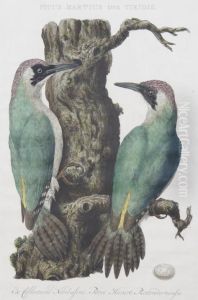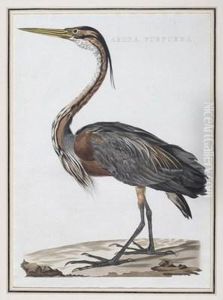Jan Christiaan Sepp Paintings
Jan Christiaan Sepp was a Dutch illustrator, engraver, and publisher born on March 15, 1739, in Amsterdam, Netherlands. He is best known for his detailed and scientifically accurate illustrations of natural history subjects, which reflect the Enlightenment era's burgeoning interest in the natural world and the classification of its many species.
Sepp came from a family with a strong tradition in printmaking and publishing. His father, Christiaan Sepp, was also an engraver and publisher, and Jan Christiaan would continue in his family's footsteps. His work often involved collaboration with scientists and naturalists of the time, which helped ensure the accuracy of his illustrations. Sepp's contributions to the field of natural history illustration were significant, providing valuable visual records for research and education during a time when such images were crucial for scientific study.
Throughout his career, Sepp published several important works, including 'Nederlandsche Insecten' (Dutch Insects), which is considered a seminal work in entomology. This multi-volume set was published over many years and contained detailed engravings of various insects, their life cycles, and habitats. The quality and precision of his work were so high that it not only appealed to academics but also to art collectors and the broader public who were interested in the natural sciences.
Sepp was also involved in the production of books on other subjects, such as the multi-volume 'Nederlandsche Vogelen' (Dutch Birds), which was completed by his son, Jan Christiaan Sepp Jr., after his death. This work was one of the first comprehensive studies on the birds of the Netherlands and contained life-sized illustrations that were both scientifically valuable and aesthetically pleasing.
Jan Christiaan Sepp's dedication to his craft and his collaboration with the scientific community made him an important figure in the history of scientific illustration. His works remain valuable to historians, scientists, and art enthusiasts alike for their combination of artistic merit and scientific accuracy. Sepp passed away on September 27, 1811, but his legacy lives on through his contributions to the field of natural history art.

